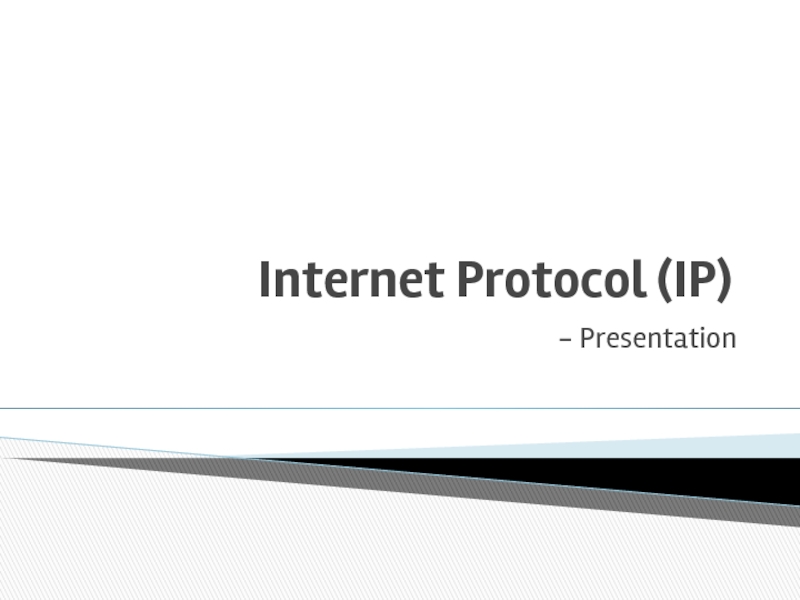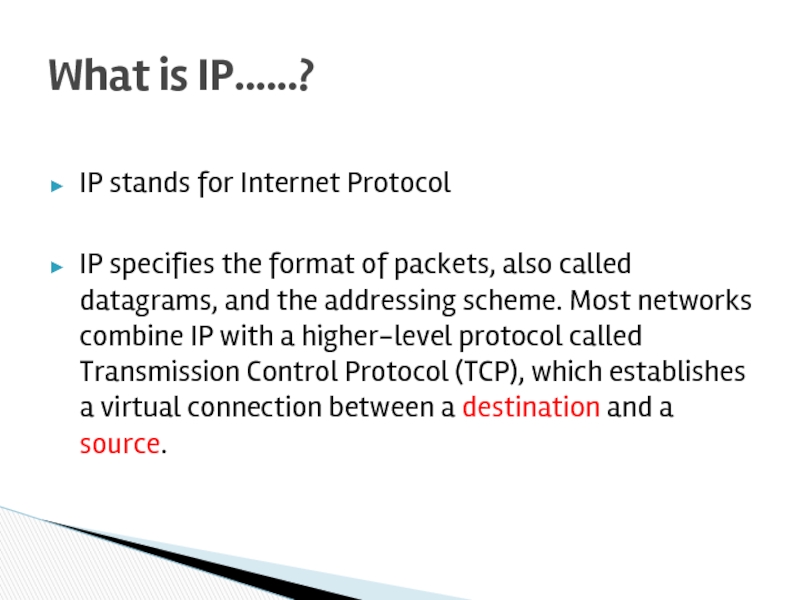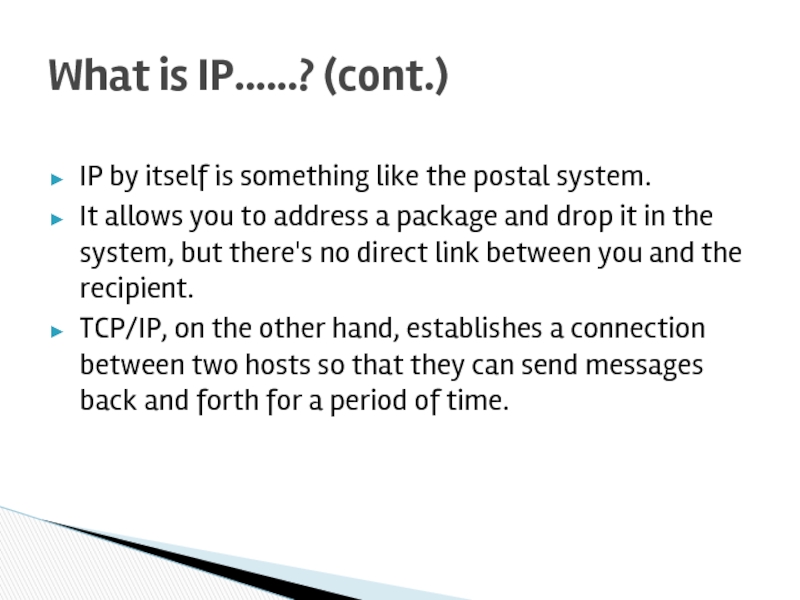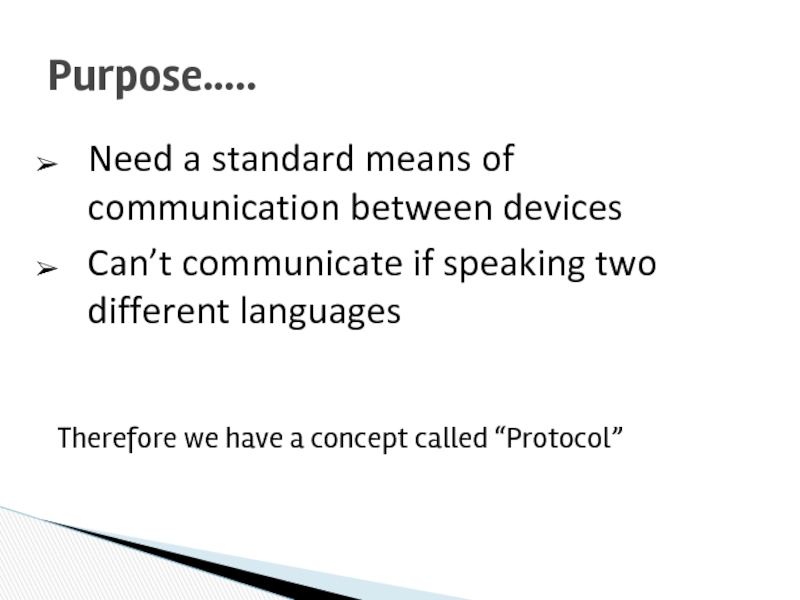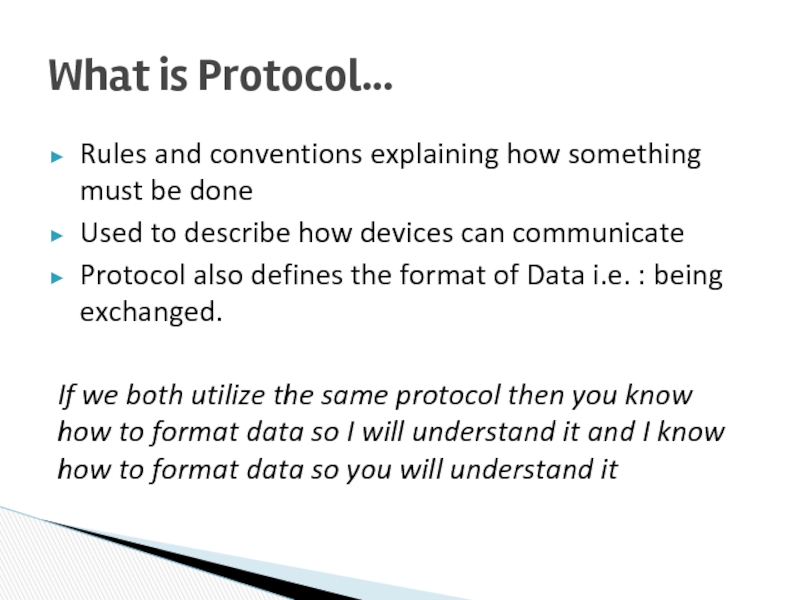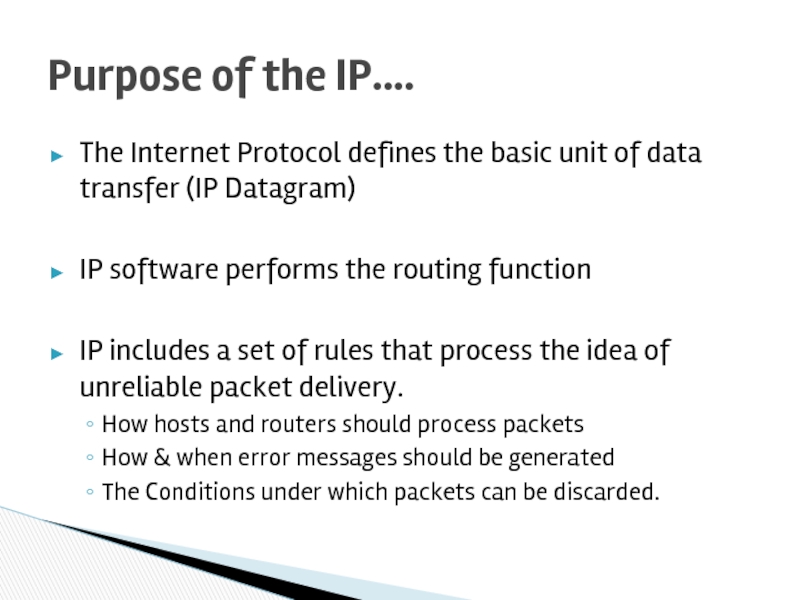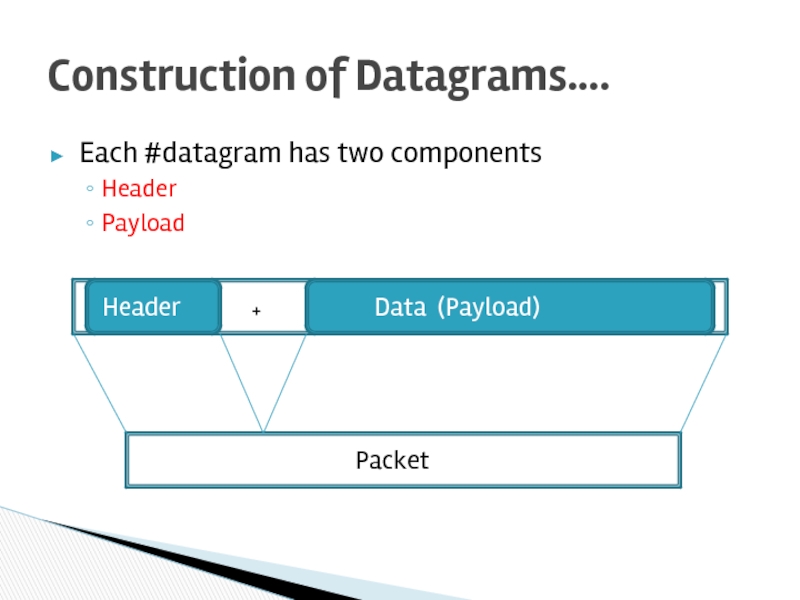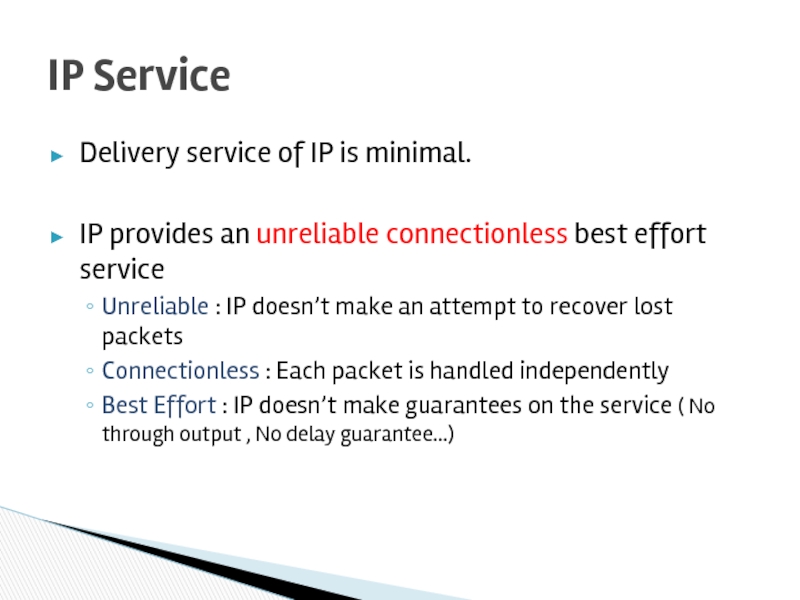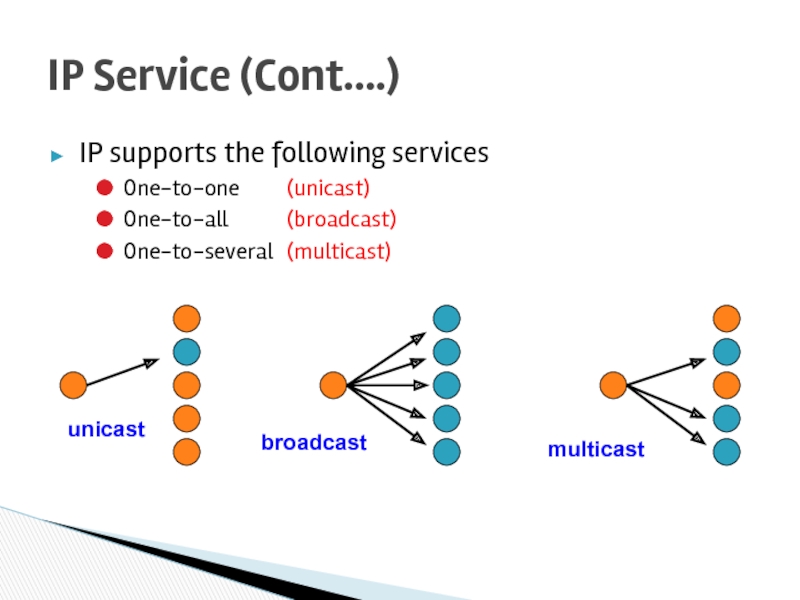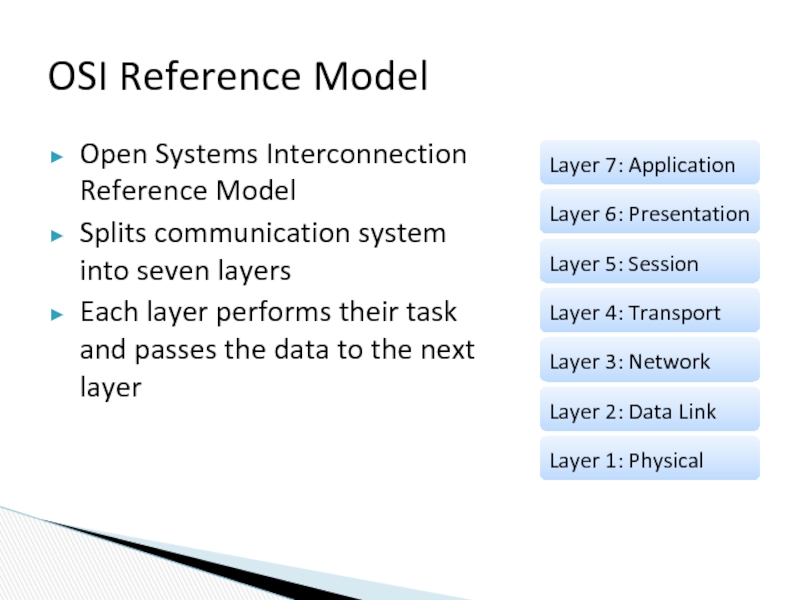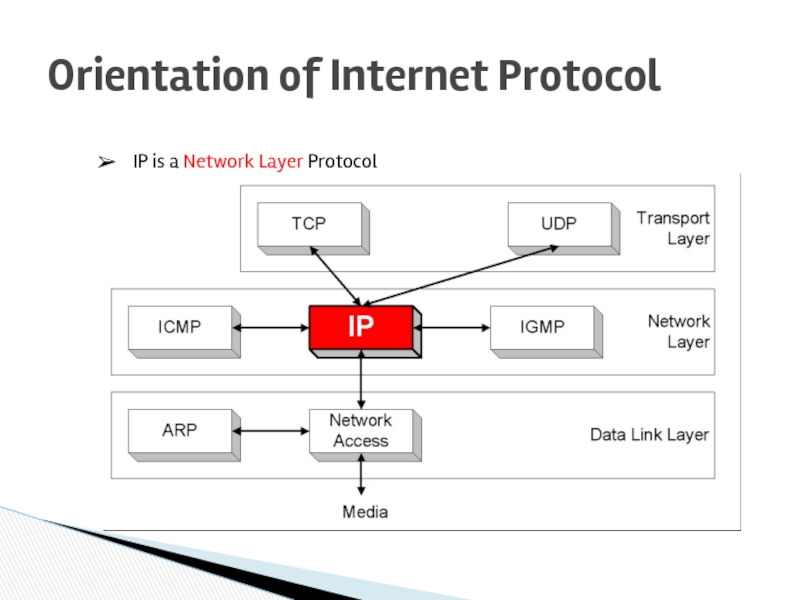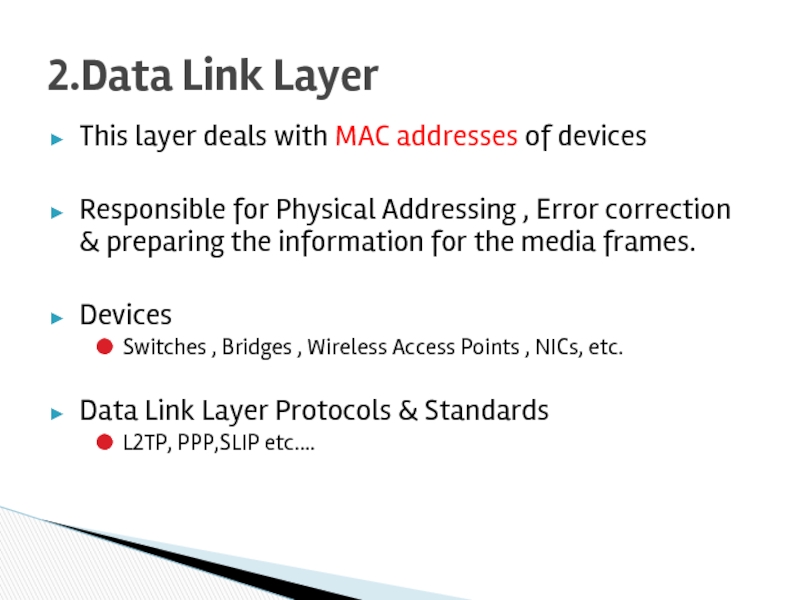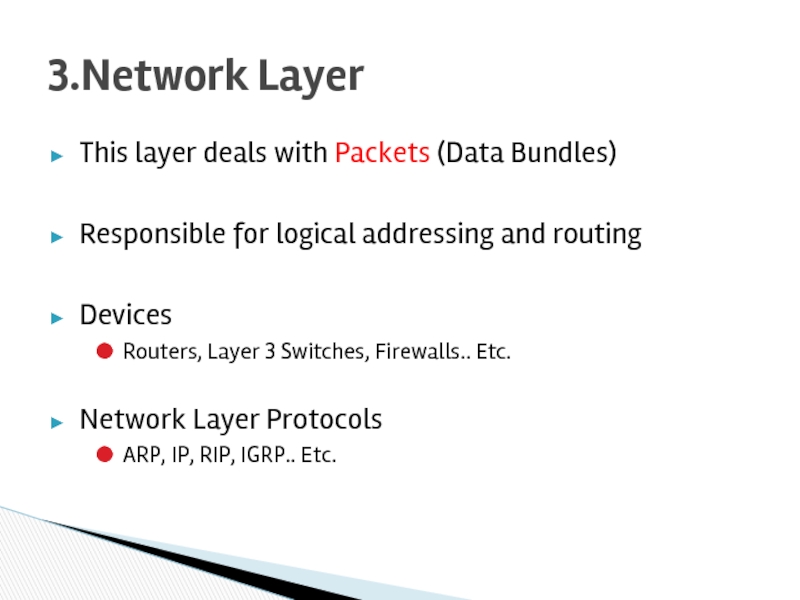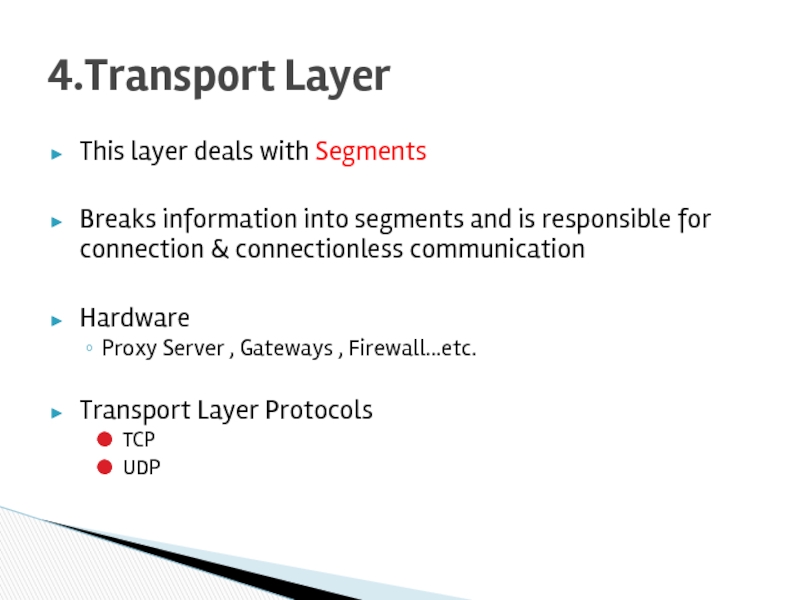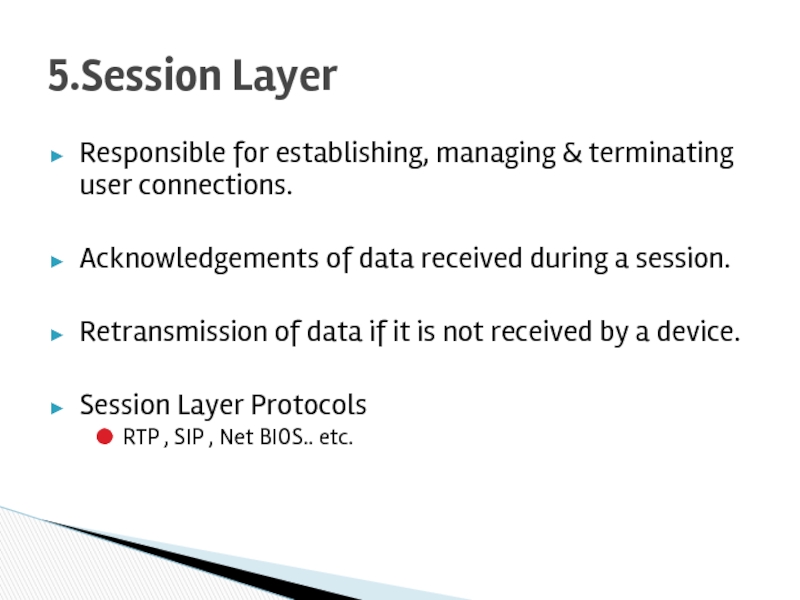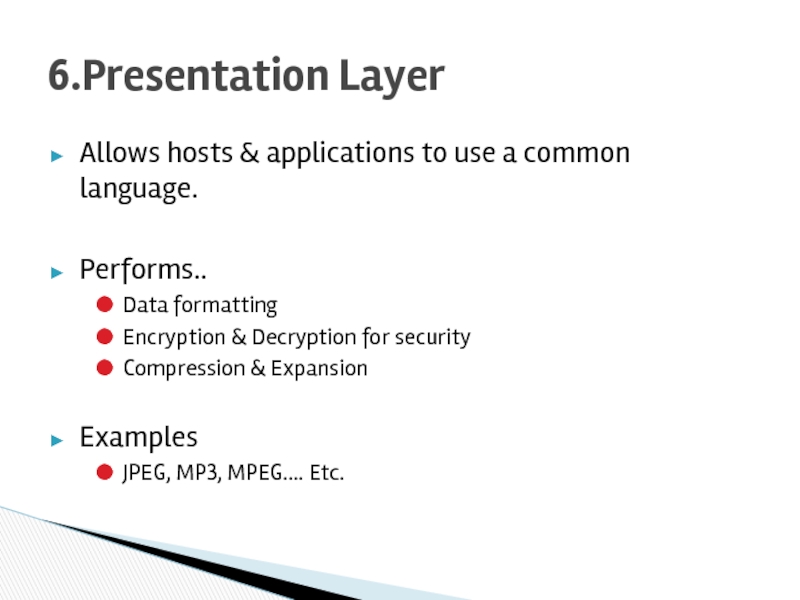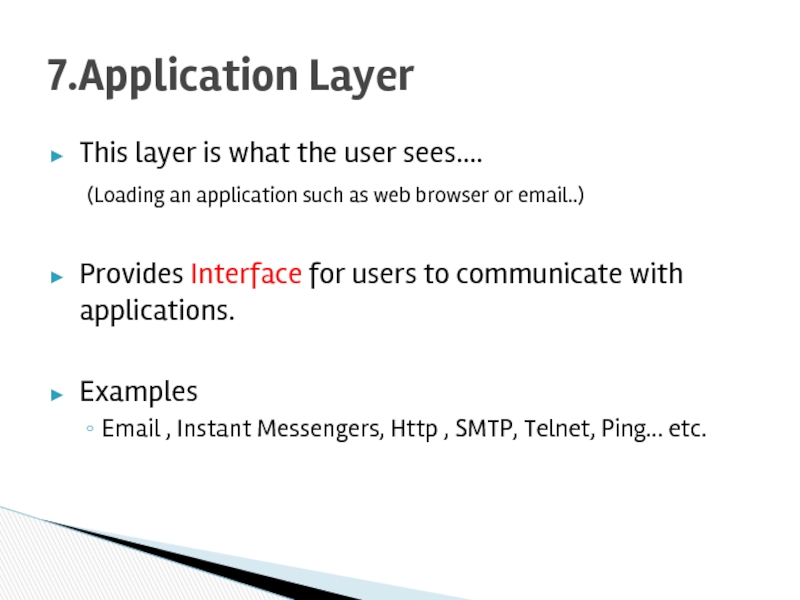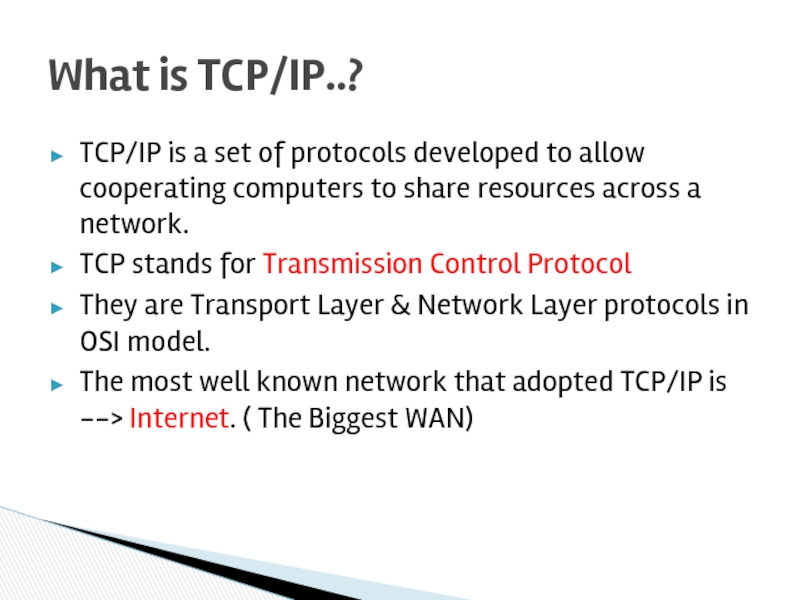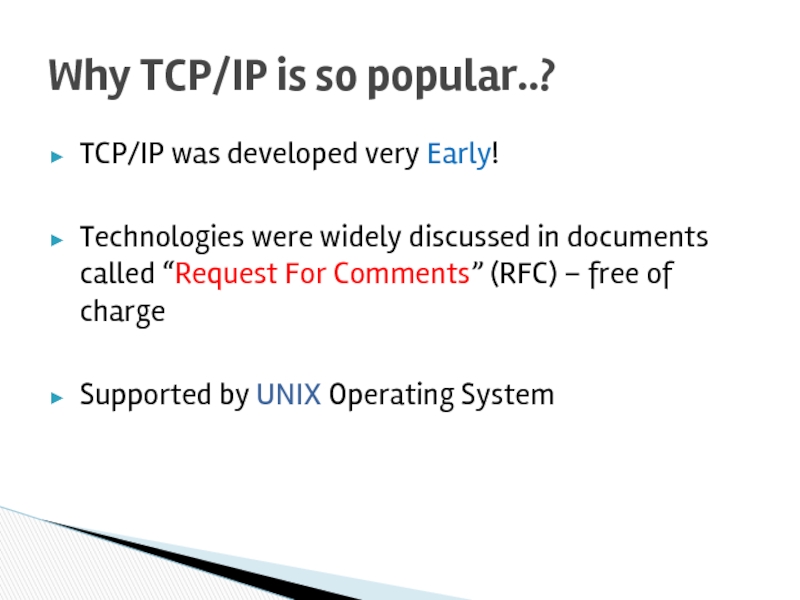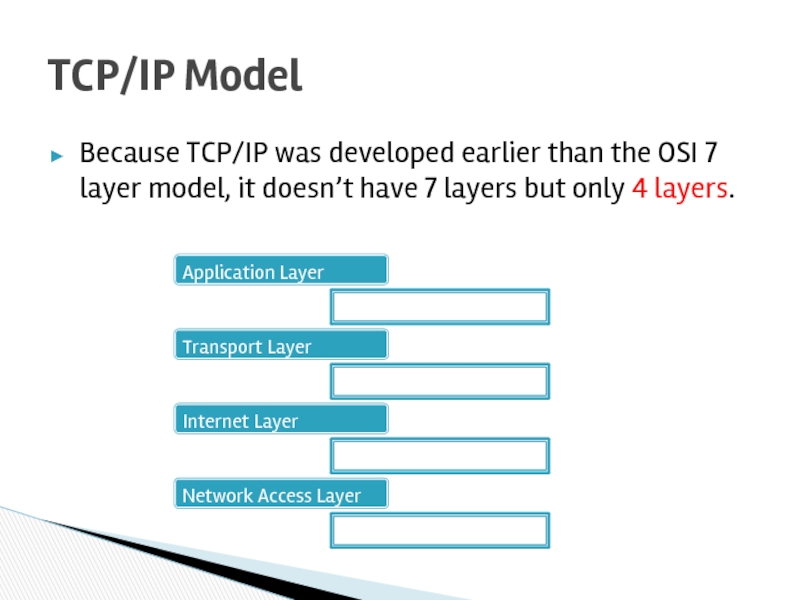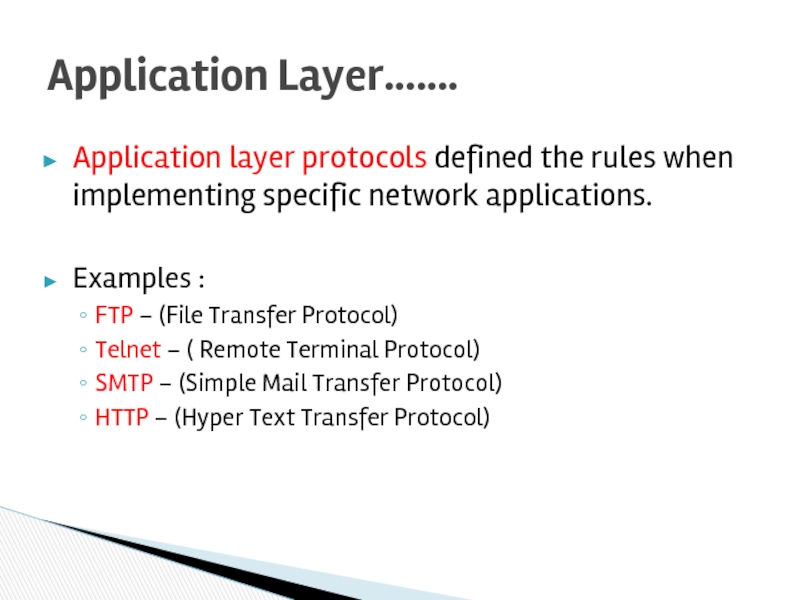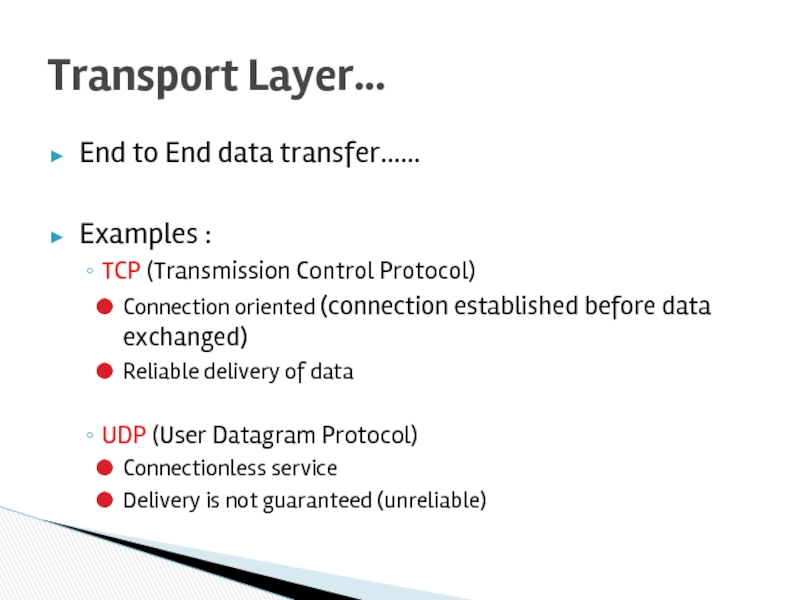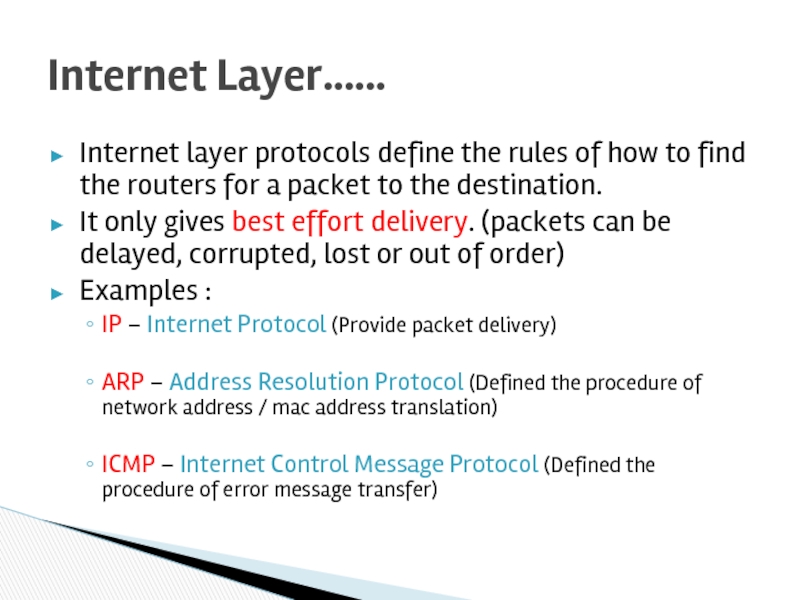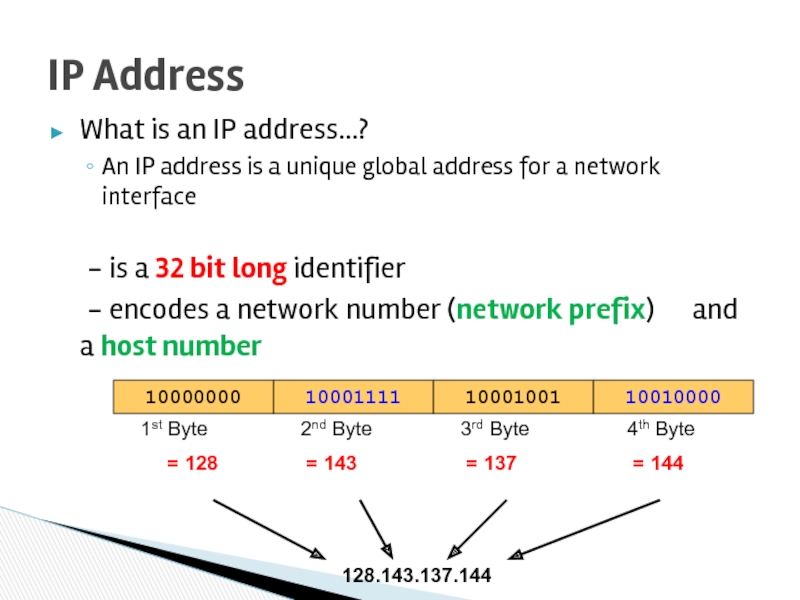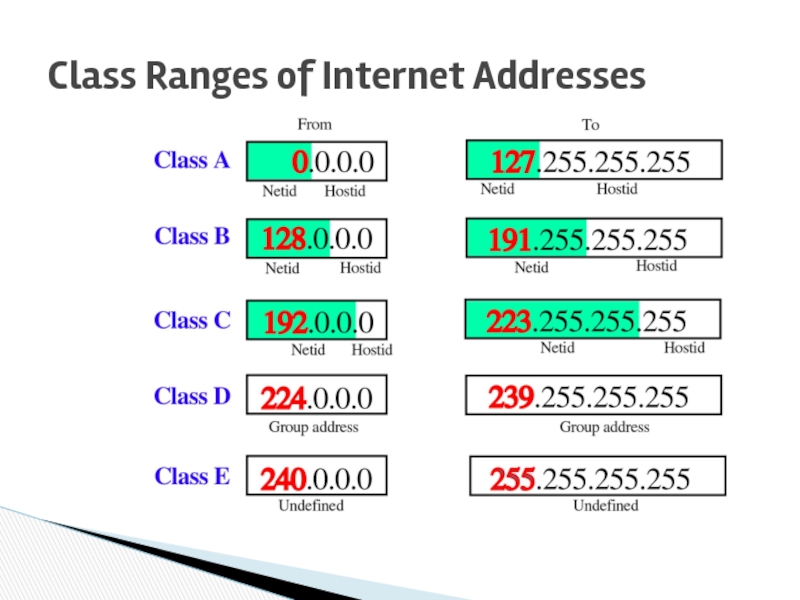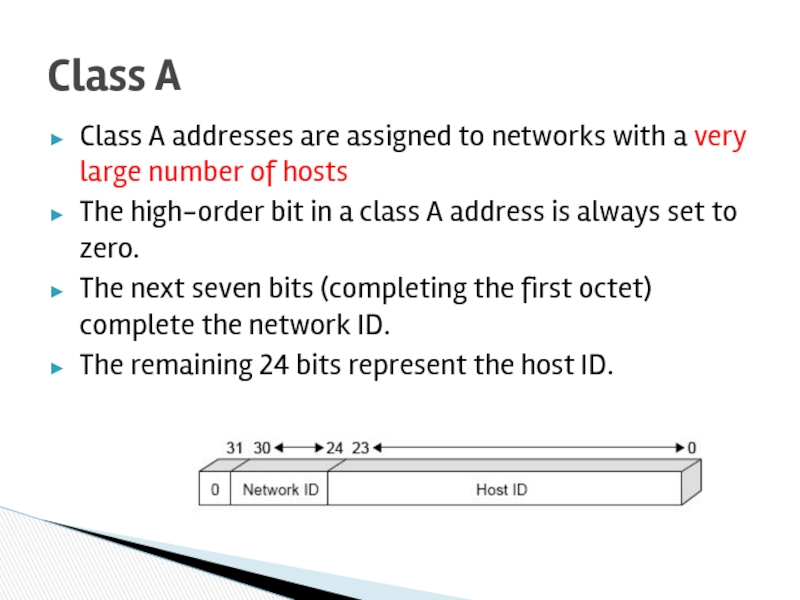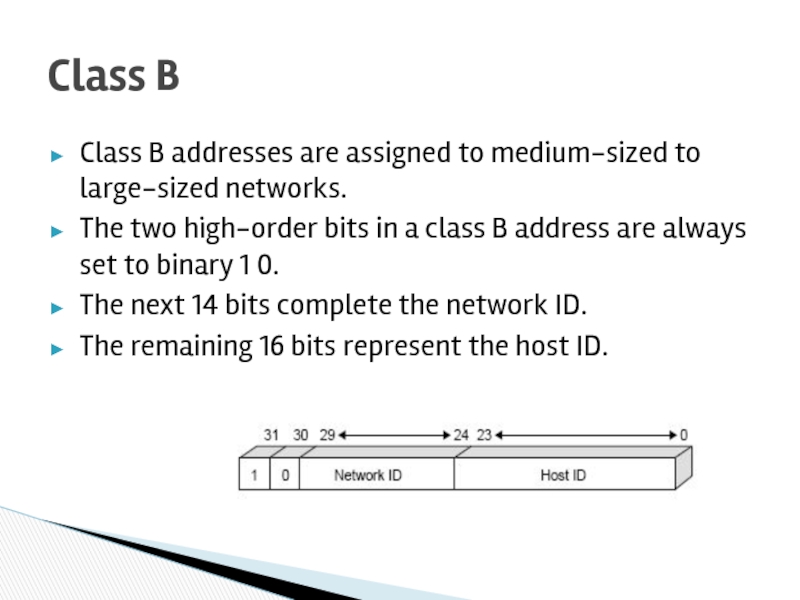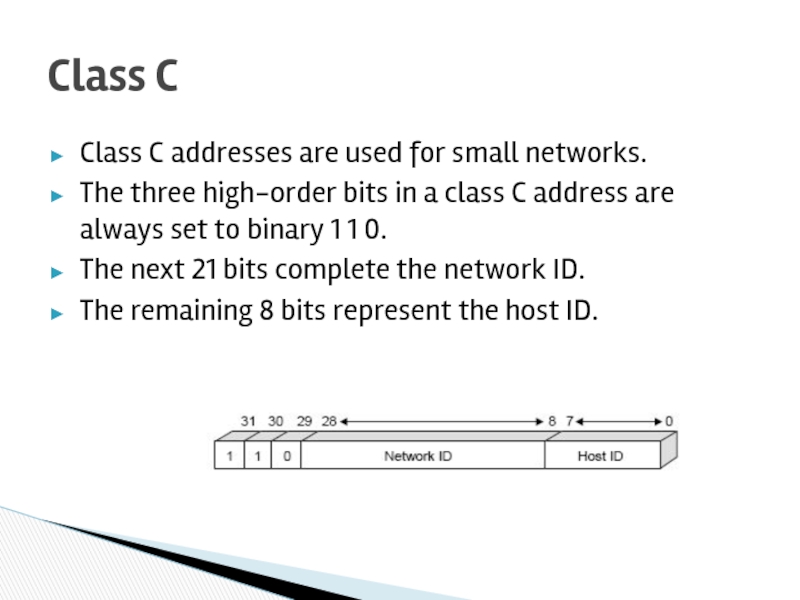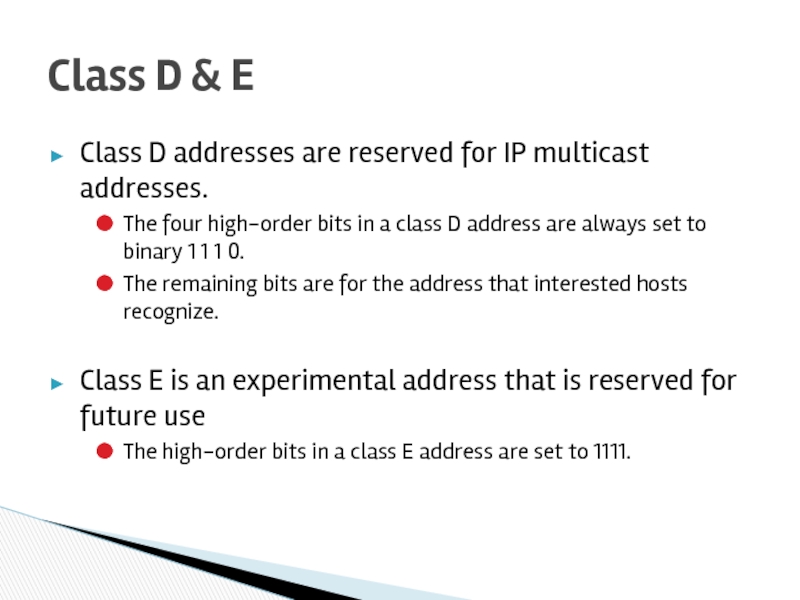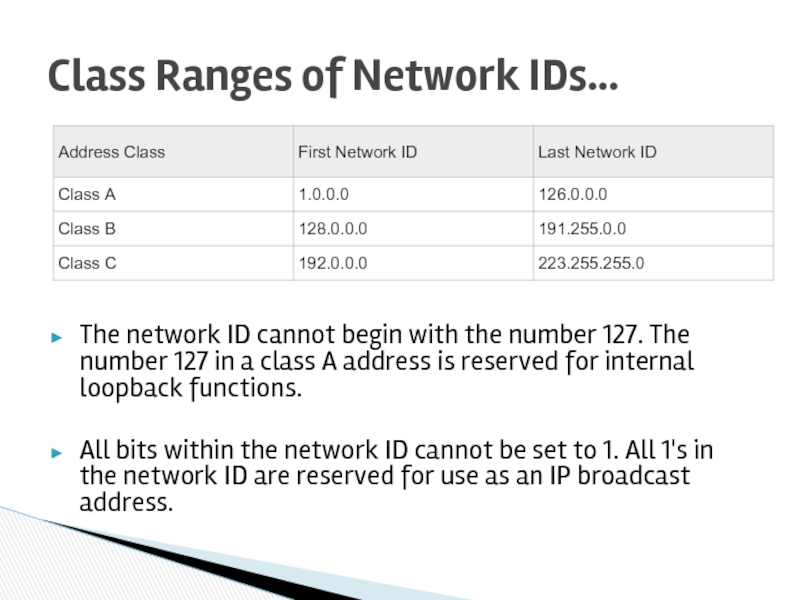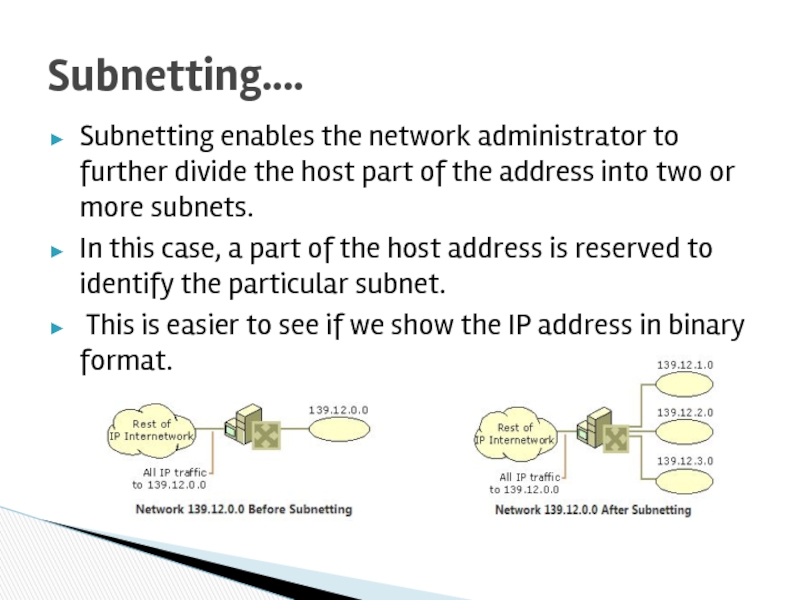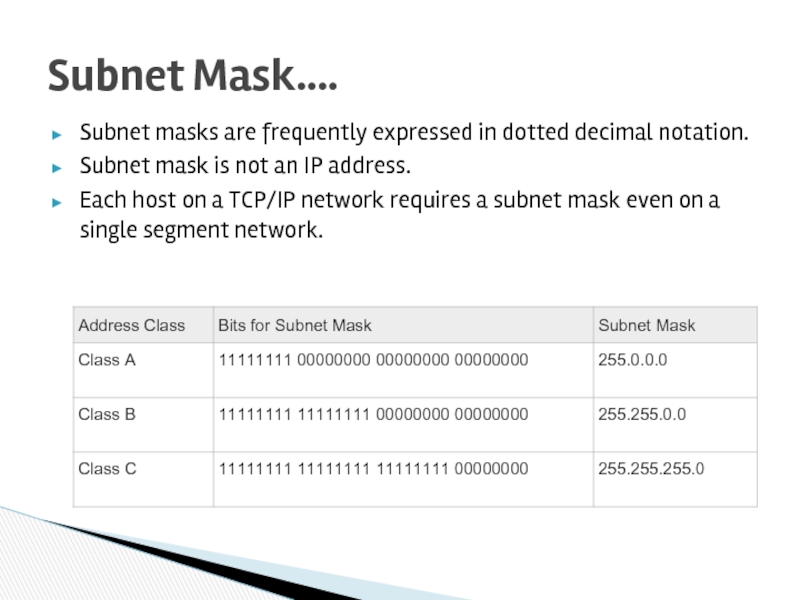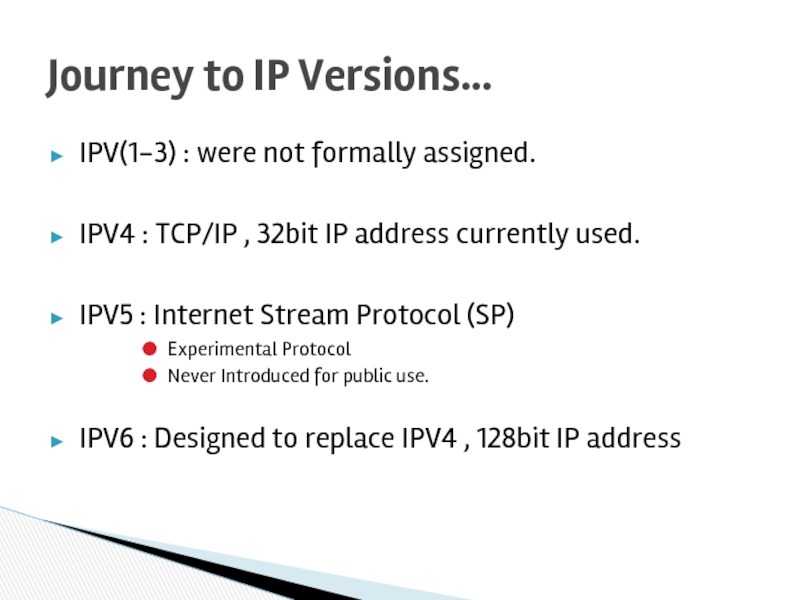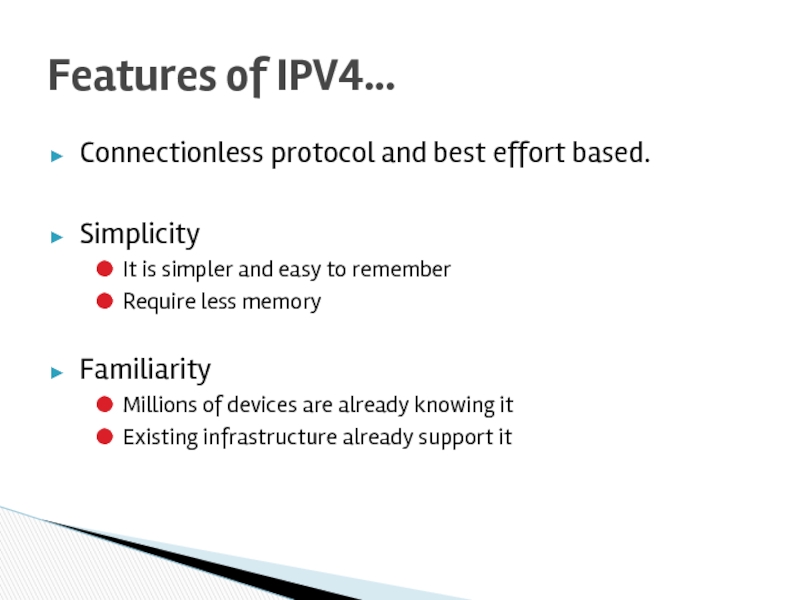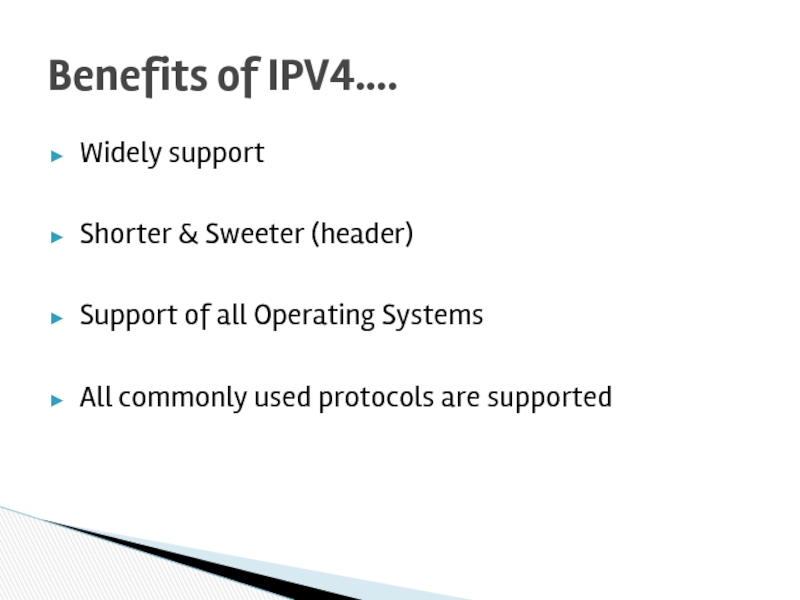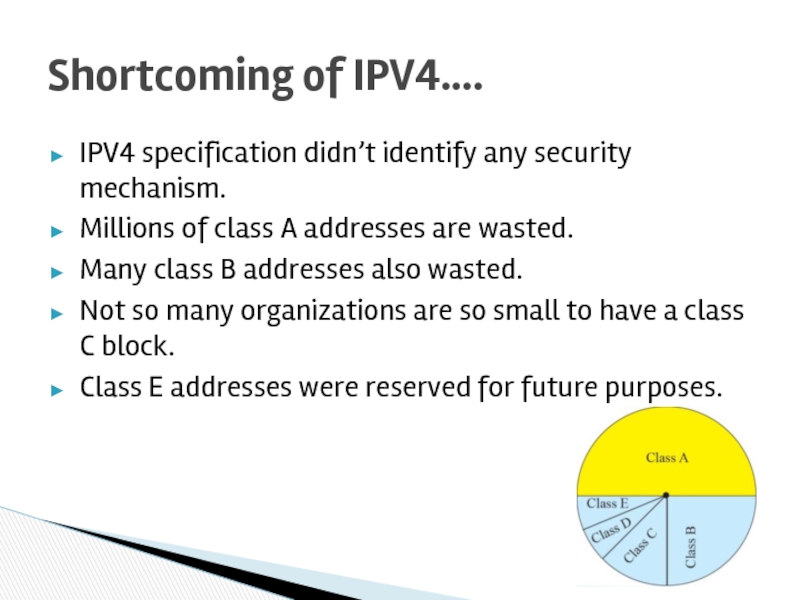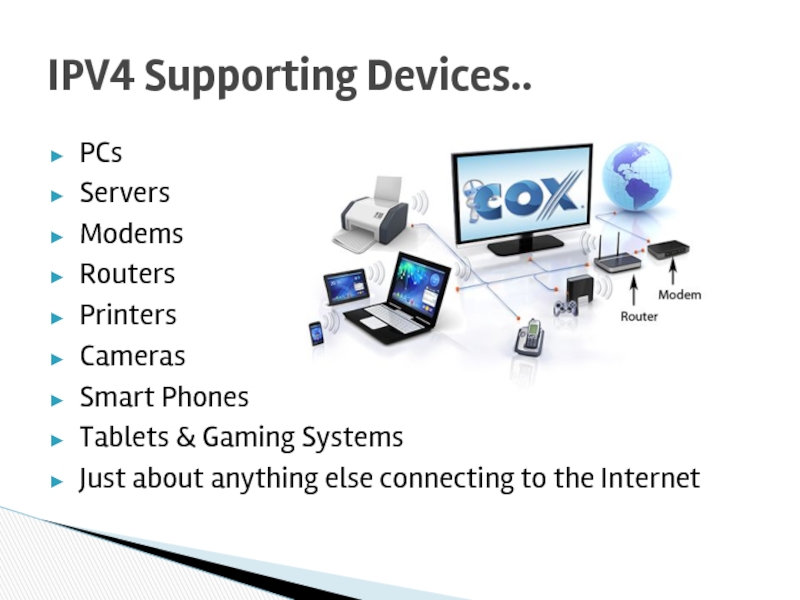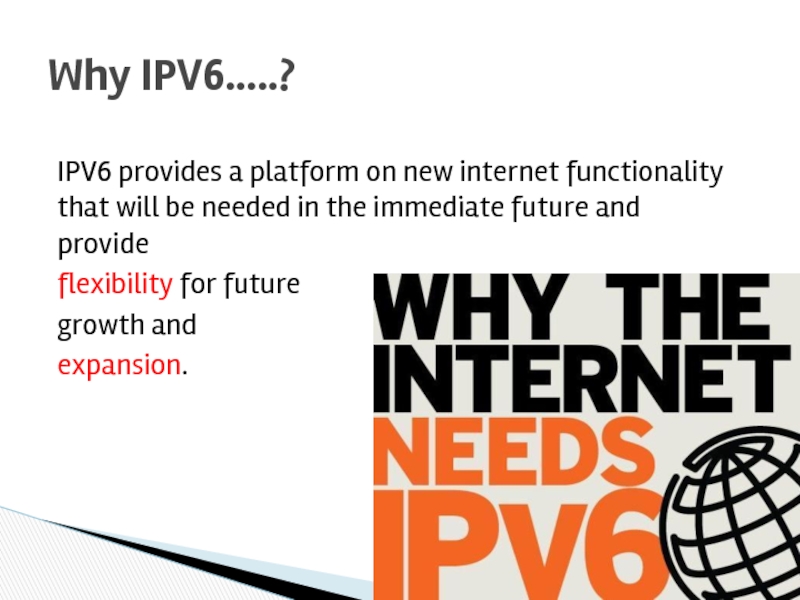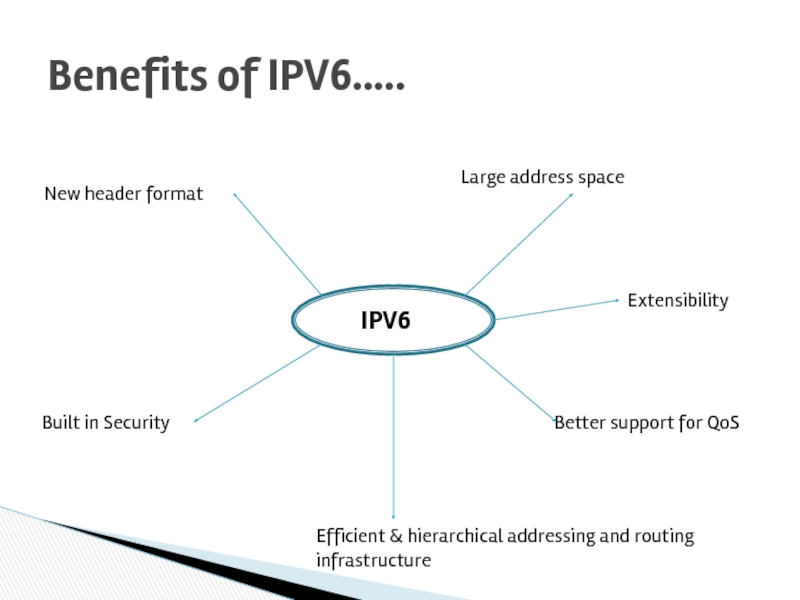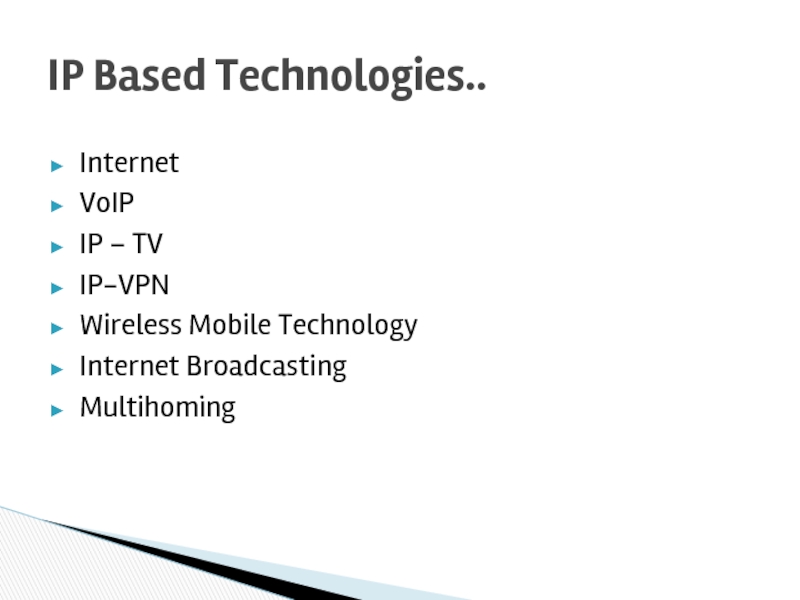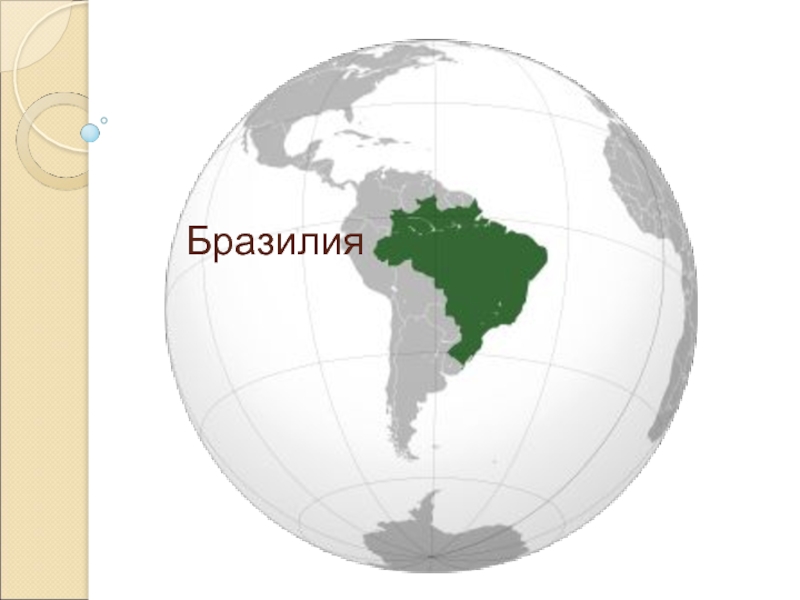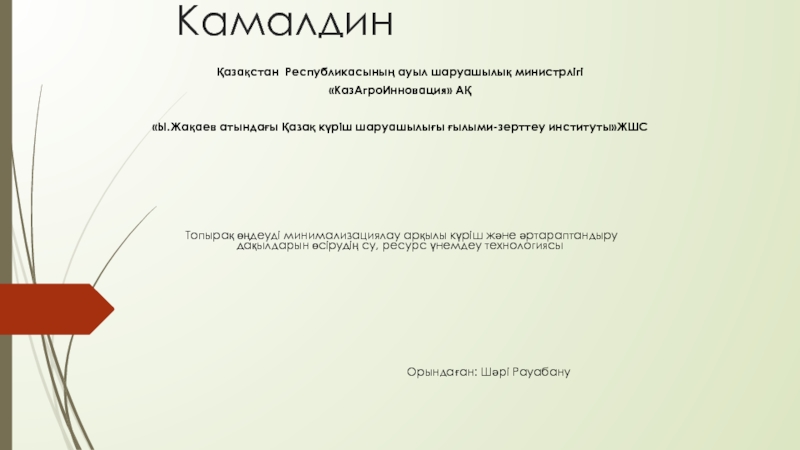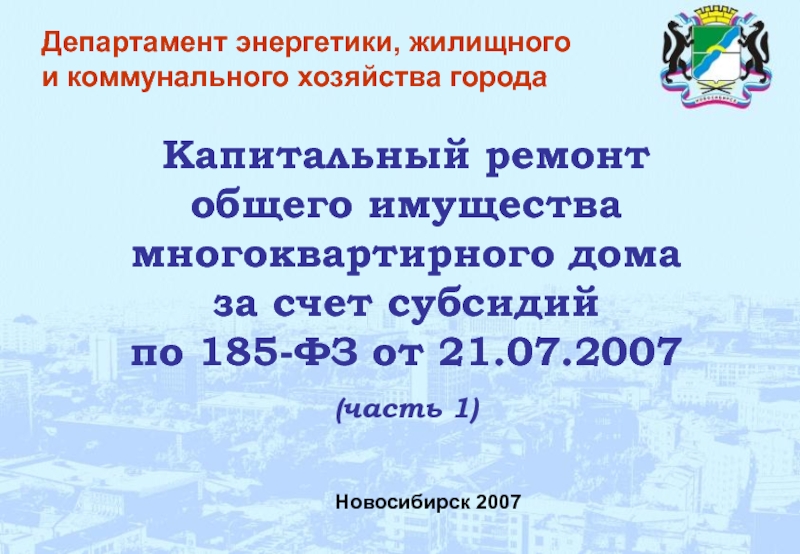- Главная
- Разное
- Дизайн
- Бизнес и предпринимательство
- Аналитика
- Образование
- Развлечения
- Красота и здоровье
- Финансы
- Государство
- Путешествия
- Спорт
- Недвижимость
- Армия
- Графика
- Культурология
- Еда и кулинария
- Лингвистика
- Английский язык
- Астрономия
- Алгебра
- Биология
- География
- Детские презентации
- Информатика
- История
- Литература
- Маркетинг
- Математика
- Медицина
- Менеджмент
- Музыка
- МХК
- Немецкий язык
- ОБЖ
- Обществознание
- Окружающий мир
- Педагогика
- Русский язык
- Технология
- Физика
- Философия
- Химия
- Шаблоны, картинки для презентаций
- Экология
- Экономика
- Юриспруденция
Internet Protocol (IP) презентация
Содержание
- 1. Internet Protocol (IP)
- 2. Presented by…. S.L.D.KASUN National Diploma in Engineering
- 3. IP stands for Internet Protocol IP
- 4. IP by itself is something like the
- 5. Need a standard means of communication between
- 6. Rules and conventions explaining how something must
- 7. The Internet Protocol defines the basic unit
- 8. Each #datagram has two components Header Payload
- 9. Delivery service of IP is minimal.
- 10. IP supports the following services One-to-one (unicast)
- 11. Open Systems Interconnection Reference Model Splits communication
- 12. Orientation of Internet Protocol IP is a Network Layer Protocol
- 13. This layer deals with the Hardware
- 14. This layer deals with MAC addresses of
- 15. This layer deals with Packets (Data Bundles)
- 16. This layer deals with Segments Breaks
- 17. Responsible for establishing, managing & terminating user
- 18. Allows hosts & applications to use a
- 19. This layer is what the user sees….
- 20. TCP/IP is a set of protocols developed
- 21. TCP/IP was developed very Early! Technologies
- 22. Because TCP/IP was developed earlier than the
- 24. Application layer protocols defined the rules when
- 25. End to End data transfer…… Examples
- 26. Internet layer protocols define the rules of
- 27. Also known as Network Interface Layer…
- 28. What is an IP address…? An IP
- 29. Class Ranges of Internet Addresses
- 30. Class A addresses are assigned to networks
- 31. Class B addresses are assigned to medium-sized
- 32. Class C addresses are used for small
- 33. Class D addresses are reserved for IP
- 34. The network ID cannot begin with the
- 35. Subnetting enables the network administrator to further
- 36. Subnet masks are frequently expressed in dotted
- 37. IPV(1-3) : were not formally assigned.
- 38. Connectionless protocol and best effort based.
- 39. Widely support Shorter & Sweeter (header)
- 40. IPV4 specification didn’t identify any security mechanism.
- 41. PCs Servers Modems Routers Printers Cameras Smart
- 42. IPV6 provides a platform on new internet
- 43. Benefits of IPV6….. IPV6 New header
- 44. Internet VoIP IP – TV IP-VPN Wireless
Слайд 2Presented by….
S.L.D.KASUN
National Diploma in Engineering Sciences (Telecommunication Engineering)
Institute of Engineering Technology,
Katunayake,
Suggestions --→ dksljets@gmail.com
Слайд 3IP stands for Internet Protocol
IP specifies the format of packets, also
What is IP……?
Слайд 4IP by itself is something like the postal system.
It allows
TCP/IP, on the other hand, establishes a connection between two hosts so that they can send messages back and forth for a period of time.
What is IP……? (cont.)
Слайд 5Need a standard means of communication between devices
Can’t communicate if speaking
Therefore we have a concept called “Protocol”
Purpose…..
Слайд 6Rules and conventions explaining how something must be done
Used to describe
Protocol also defines the format of Data i.e. : being exchanged.
If we both utilize the same protocol then you know how to format data so I will understand it and I know how to format data so you will understand it
What is Protocol…
Слайд 7The Internet Protocol defines the basic unit of data transfer (IP
IP software performs the routing function
IP includes a set of rules that process the idea of unreliable packet delivery.
How hosts and routers should process packets
How & when error messages should be generated
The Conditions under which packets can be discarded.
Purpose of the IP….
Слайд 8Each #datagram has two components
Header
Payload
Construction of Datagrams….
Header
+
Data (Payload)
Packet
Слайд 9Delivery service of IP is minimal.
IP provides an unreliable connectionless best
Unreliable : IP doesn’t make an attempt to recover lost packets
Connectionless : Each packet is handled independently
Best Effort : IP doesn’t make guarantees on the service ( No through output , No delay guarantee…)
IP Service
Слайд 10IP supports the following services
One-to-one (unicast)
One-to-all (broadcast)
One-to-several (multicast)
IP Service (Cont.…)
unicast
broadcast
multicast
Слайд 11Open Systems Interconnection Reference Model
Splits communication system into seven layers
Each layer
OSI Reference Model
Слайд 13 This layer deals with the Hardware of network.
Physical Layer Hardware
Cables
Function :
Manages signaling to and from physical network connections
Physical Layer Protocols & Standards
Ethernet (802.3), Token Ring(802.5) , Wi-Fi(802.11)
1.Physical Layer
Слайд 14This layer deals with MAC addresses of devices
Responsible for Physical Addressing
Devices
Switches , Bridges , Wireless Access Points , NICs, etc.
Data Link Layer Protocols & Standards
L2TP, PPP,SLIP etc….
2.Data Link Layer
Слайд 15This layer deals with Packets (Data Bundles)
Responsible for logical addressing and
Devices
Routers, Layer 3 Switches, Firewalls.. Etc.
Network Layer Protocols
ARP, IP, RIP, IGRP.. Etc.
3.Network Layer
Слайд 16This layer deals with Segments
Breaks information into segments and is responsible
Hardware
Proxy Server , Gateways , Firewall…etc.
Transport Layer Protocols
TCP
UDP
4.Transport Layer
Слайд 17Responsible for establishing, managing & terminating user connections.
Acknowledgements of data received
Retransmission of data if it is not received by a device.
Session Layer Protocols
RTP , SIP , Net BIOS.. etc.
5.Session Layer
Слайд 18Allows hosts & applications to use a common language.
Performs..
Data formatting
Encryption
Compression & Expansion
Examples
JPEG, MP3, MPEG…. Etc.
6.Presentation Layer
Слайд 19This layer is what the user sees….
(Loading an application such as
Provides Interface for users to communicate with applications.
Examples
Email , Instant Messengers, Http , SMTP, Telnet, Ping… etc.
7.Application Layer
Слайд 20TCP/IP is a set of protocols developed to allow cooperating computers
TCP stands for Transmission Control Protocol
They are Transport Layer & Network Layer protocols in OSI model.
The most well known network that adopted TCP/IP is --> Internet. ( The Biggest WAN)
What is TCP/IP..?
Слайд 21TCP/IP was developed very Early!
Technologies were widely discussed in documents called
Supported by UNIX Operating System
Why TCP/IP is so popular..?
Слайд 22Because TCP/IP was developed earlier than the OSI 7 layer model,
TCP/IP Model
Application Layer
Transport Layer
Internet Layer
Network Access Layer
Слайд 24Application layer protocols defined the rules when implementing specific network applications.
Examples
FTP – (File Transfer Protocol)
Telnet – ( Remote Terminal Protocol)
SMTP – (Simple Mail Transfer Protocol)
HTTP – (Hyper Text Transfer Protocol)
Application Layer…….
Слайд 25End to End data transfer……
Examples :
TCP (Transmission Control Protocol)
Connection oriented
Reliable delivery of data
UDP (User Datagram Protocol)
Connectionless service
Delivery is not guaranteed (unreliable)
Transport Layer…
Слайд 26Internet layer protocols define the rules of how to find the
It only gives best effort delivery. (packets can be delayed, corrupted, lost or out of order)
Examples :
IP – Internet Protocol (Provide packet delivery)
ARP – Address Resolution Protocol (Defined the procedure of network address / mac address translation)
ICMP – Internet Control Message Protocol (Defined the procedure of error message transfer)
Internet Layer……
Слайд 27Also known as Network Interface Layer…
The Network Access Layer is the
Mostly in hardware
A well known example is Ethernet
Examples :
Ethernet
Token Ring
Frame Relay
ATM (Asynchronous Transfer Mode)
Network Access Layer….
Слайд 28What is an IP address…?
An IP address is a unique global
- is a 32 bit long identifier
- encodes a network number (network prefix) and a host number
IP Address
10001111
10000000
10001001
10010000
1st Byte
= 128
2nd Byte
= 143
3rd Byte
= 137
4th Byte
= 144
128.143.137.144
Слайд 30Class A addresses are assigned to networks with a very large
The high-order bit in a class A address is always set to zero.
The next seven bits (completing the first octet) complete the network ID.
The remaining 24 bits represent the host ID.
Class A
Слайд 31Class B addresses are assigned to medium-sized to large-sized networks.
The two
The next 14 bits complete the network ID.
The remaining 16 bits represent the host ID.
Class B
Слайд 32Class C addresses are used for small networks.
The three high-order bits
The next 21 bits complete the network ID.
The remaining 8 bits represent the host ID.
Class C
Слайд 33Class D addresses are reserved for IP multicast addresses.
The four
The remaining bits are for the address that interested hosts recognize.
Class E is an experimental address that is reserved for future use
The high-order bits in a class E address are set to 1111.
Class D & E
Слайд 34The network ID cannot begin with the number 127. The number
All bits within the network ID cannot be set to 1. All 1's in the network ID are reserved for use as an IP broadcast address.
Class Ranges of Network IDs…
Слайд 35Subnetting enables the network administrator to further divide the host part
In this case, a part of the host address is reserved to identify the particular subnet.
This is easier to see if we show the IP address in binary format.
Subnetting….
Слайд 36Subnet masks are frequently expressed in dotted decimal notation.
Subnet mask is
Each host on a TCP/IP network requires a subnet mask even on a single segment network.
Subnet Mask….
Слайд 37IPV(1-3) : were not formally assigned.
IPV4 : TCP/IP , 32bit IP
IPV5 : Internet Stream Protocol (SP)
Experimental Protocol
Never Introduced for public use.
IPV6 : Designed to replace IPV4 , 128bit IP address
Journey to IP Versions…
Слайд 38Connectionless protocol and best effort based.
Simplicity
It is simpler and easy to
Require less memory
Familiarity
Millions of devices are already knowing it
Existing infrastructure already support it
Features of IPV4…
Слайд 39Widely support
Shorter & Sweeter (header)
Support of all Operating Systems
All commonly used
Benefits of IPV4….
Слайд 40IPV4 specification didn’t identify any security mechanism.
Millions of class A addresses
Many class B addresses also wasted.
Not so many organizations are so small to have a class C block.
Class E addresses were reserved for future purposes.
Shortcoming of IPV4….
Слайд 41PCs
Servers
Modems
Routers
Printers
Cameras
Smart Phones
Tablets & Gaming Systems
Just about anything else connecting to the
IPV4 Supporting Devices..
Слайд 42IPV6 provides a platform on new internet functionality that will be
flexibility for future
growth and
expansion.
Why IPV6…..?
Слайд 43Benefits of IPV6…..
IPV6
New header format
Large address space
Built in Security
Extensibility
Better support for
Efficient & hierarchical addressing and routing infrastructure
